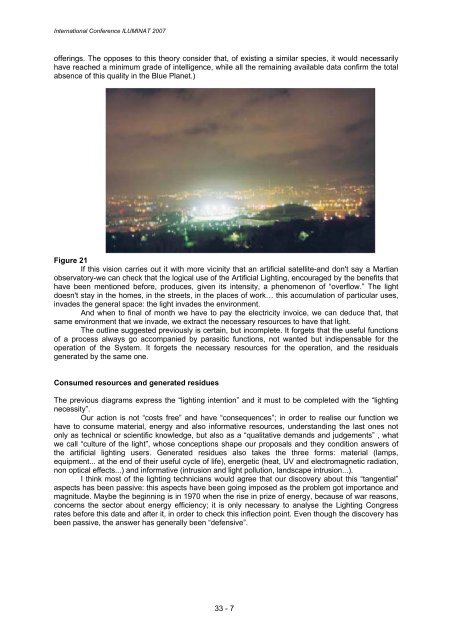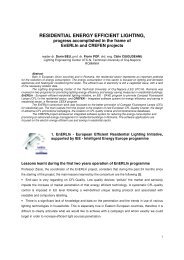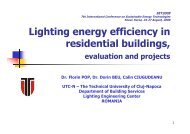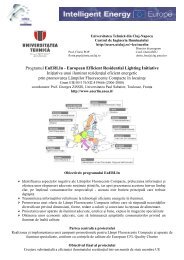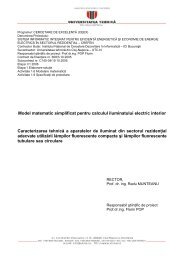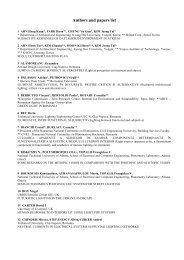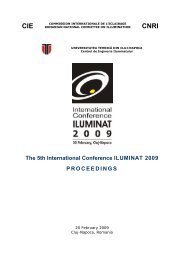1 June 2007 Cluj-Napoca, Romania - Lighting Engineering Center ...
1 June 2007 Cluj-Napoca, Romania - Lighting Engineering Center ...
1 June 2007 Cluj-Napoca, Romania - Lighting Engineering Center ...
Create successful ePaper yourself
Turn your PDF publications into a flip-book with our unique Google optimized e-Paper software.
International Conference ILUMINAT <strong>2007</strong><br />
offerings. The opposes to this theory consider that, of existing a similar species, it would necessarily<br />
have reached a minimum grade of intelligence, while all the remaining available data confirm the total<br />
absence of this quality in the Blue Planet.)<br />
Figure 21<br />
If this vision carries out it with more vicinity that an artificial satellite-and don't say a Martian<br />
observatory-we can check that the logical use of the Artificial <strong>Lighting</strong>, encouraged by the benefits that<br />
have been mentioned before, produces, given its intensity, a phenomenon of “overflow.” The light<br />
doesn't stay in the homes, in the streets, in the places of work… this accumulation of particular uses,<br />
invades the general space: the light invades the environment.<br />
And when to final of month we have to pay the electricity invoice, we can deduce that, that<br />
same environment that we invade, we extract the necessary resources to have that light.<br />
The outline suggested previously is certain, but incomplete. It forgets that the useful functions<br />
of a process always go accompanied by parasitic functions, not wanted but indispensable for the<br />
operation of the System. It forgets the necessary resources for the operation, and the residuals<br />
generated by the same one.<br />
Consumed resources and generated residues<br />
The previous diagrams express the “lighting intention” and it must to be completed with the “lighting<br />
necessity”.<br />
Our action is not “costs free” and have “consequences”; in order to realise our function we<br />
have to consume material, energy and also informative resources, understanding the last ones not<br />
only as technical or scientific knowledge, but also as a “qualitative demands and judgements” , what<br />
we call “culture of the light”, whose conceptions shape our proposals and they condition answers of<br />
the artificial lighting users. Generated residues also takes the three forms: material (lamps,<br />
equipment... at the end of their useful cycle of life), energetic (heat, UV and electromagnetic radiation,<br />
non optical effects...) and informative (intrusion and light pollution, landscape intrusion...).<br />
I think most of the lighting technicians would agree that our discovery about this “tangential”<br />
aspects has been passive: this aspects have been going imposed as the problem got importance and<br />
magnitude. Maybe the beginning is in 1970 when the rise in prize of energy, because of war reasons,<br />
concerns the sector about energy efficiency; it is only necessary to analyse the <strong>Lighting</strong> Congress<br />
rates before this date and after it, in order to check this inflection point. Even though the discovery has<br />
been passive, the answer has generally been “defensive”.<br />
33 - 7


